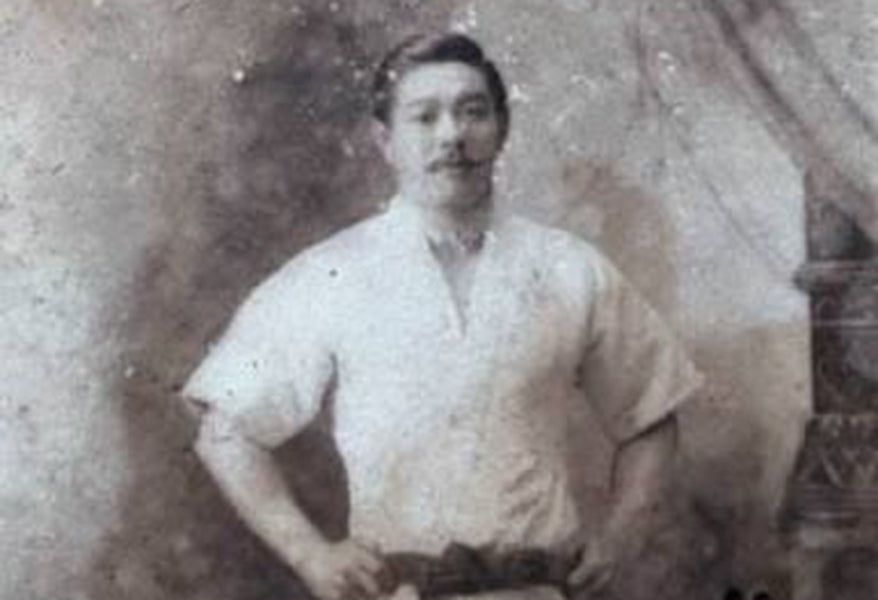News
A Short History of the Evolution of Jiu-Jitsu

A Short History of the Evolution of Jiu-Jitsu
Jiu-jitsu has become so ubiquitous in today’s world, that’s hard to go anywhere without seeing a jiu-jitsu academy, or running into someone who either does it, or knows someone who trains. It’s really quite amazing. Unfortunately, with such rapid global expansion, the community tends to lose sight of the roots of the art.
Sure, nearly every Brazilian jiu-jitsu practitioner will have a cursory knowledge of its origins, and anyone worth their stripes will know of the Gracie family and the fact that they played a big part in its expansion, but few will know much more beyond that.
If you don’t have the time to do your own in-depth research – you have families, jobs, school, etc. – you should know just a few more details about the history of the "gentle art." So here’s a short cheat sheet of things to know, starting with its origins in the ancient martial traditions of Japan, to its transformation in Brazil, and finally to its global prominence today.
Roots in Ancient Japan
In feudal Japan, the art of jiu-jitsu (or jujutsu) emerged as a vital component of the samurai warrior's toolkit, both for self-defense and supremacy on the battlefield. Developed during the Muromachi period (1336-1573 AD), "the gentle art" was more than just grappling. It encompassed a wide array of unarmed combat techniques designed for close-quarters combat and self-defense, as well as weaponry, including swords, staffs, knifes.
Drawing inspiration from battlefield encounters and ancient Japanese traditions, such as sumo wrestling, jujitsu practitioners mastered techniques to leverage an opponent's energy and momentum against them. Joint locks, throws (from which the specialization of would later arise), and grappling maneuvers formed the core of the art’s repertoire, emphasizing efficiency and effectiveness in overcoming adversaries.
The Birth of Brazilian Jiu-Jitsu
Fast forward to the late 19th and early 20th centuries, when Japan experienced a major social and cultural upheaval in Japan as it transitioned – relatively very quickly – from conservative, isolationist policies to global engagement. This spurred transformation across the socio-cultural and economic spectrum, and the martial arts practices was no exception. Jujutsu underwent a transformation, evolving into various specialized disciplines such as judo and aikido, each with its unique emphasis and philosophy.
This globalization led to increased immigration of Japanese citizens around the world, including to Brazil, where the most pivotal chapter in jiu-jitsu's history was to unfold. In the early 20th century, Japanese immigrant Esai Maeda, also known as Mitsuyo Maeda, made his way to Brazil, where he encountered Gastão Gracie, a prominent businessman. Grateful for Gracie's assistance, Maeda imparted his knowledge of jujitsu to Gracie's son, Carlos Gracie.
Carlos, along with his siblings, including Helio Gracie, adapted and refined the techniques taught by Maeda, laying the groundwork for what would later become Brazilian Jiu-Jitsu. Focused on ground fighting and submission grappling, BJJ prioritized leverage, technique, and strategy over size and strength.
Global Expansion
The latter half of the 20th century witnessed the widespread expansion of Brazilian Jiu-Jitsu around the world. BJJ practitioners, notably Royce Gracie, showcased the art's potency by defeating larger opponents from all matters of martial arts disciplines, using skillful grappling and submission techniques. The explosion in popularity of mixed martial arts (MMA) competitions, particularly Ultimate Fighting Championship (UFC), is one of the primary drivers of the recognition of BJJ among the wider public.
Today, jiu-jitsu transcends geographical boundaries, with academies and practitioners in every major city across the globe. From bustling metropolises to small towns, the gentle art continues to draw individuals seeking physical fitness, mental discipline, self-defense proficiency and community.
The Future
The evolution of jiu-jitsu from its origins in Japan to its worldwide popularity is a testament to its enduring relevance and adaptability. Rooted in centuries-old traditions yet continually evolving, jiu-jitsu remains a dynamic martial art that empowers individuals of all backgrounds, cultivating resilience, discipline, and self-mastery. Whether on the tatami mats of Tokyo, the barrios of Rio de Janeiro, or boutique academies of California, the gentle art of jiu-jitsu continues to inspire and enrich lives, forging connections that transcend borders and generations.
